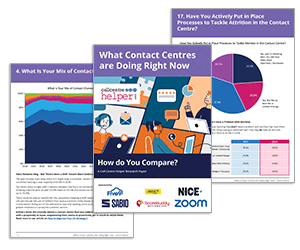Every customer wants fast and accurate solutions when they contact a call centre. But when agents fail to resolve their issues promptly or provide incorrect information, frustration grows. These dissatisfied customers often call back repeatedly, leading to repeat calls.
Not only do repeat calls drain productivity, but they can also damage customer satisfaction. Fortunately, there are effective strategies to reduce these repeat calls and maintain a positive customer experience.
Who Are Repeat Callers?
Repeat callers are customers who contact your business multiple times within a short period to resolve the same issue. These callers may be reaching out due to unresolved concerns, unclear information, or dissatisfaction with previous interactions.
They can vary widely in profile, including new customers needing guidance, long-term clients facing recurring issues, or individuals dealing with complex problems requiring multiple touchpoints.
Regardless of the definition, repeat calls signal that the initial customer interaction failed to resolve the issue. This reflects poorly on customer service quality and may suggest that agents lack the tools or training needed to provide accurate solutions.
Did you know?
Studies show that, on average, 32% of inbound calls in contact centres come from repeat callers.
What Is Repeat Call Analysis?
Conducting a repeat call analysis is vital for identifying the root causes of recurring customer enquiries. By examining call patterns and customer interactions, managers can uncover common triggers that lead to repeat calls.
Key questions to consider during analysis include:
- Are repeat calls linked to unresolved problems?
- Are multiple issues causing the same customer to keep calling?
- Are customers repeatedly checking order statuses or updates?
Answering these questions can help managers pinpoint recurring issues, improve processes, and implement strategies that reduce repeat calls.
How to Reduce Repeat Calls in Your Contact Centre
Reducing repeat calls requires a proactive approach that addresses common pain points and enhances the overall customer experience. Here are ten effective strategies to help you achieve this:
1. Route Customers to the Right Agent
Routing customers to the most skilled agent based on their needs, language preferences, or past interactions can significantly reduce repeat calls.
By using skill-based routing systems, you ensure that customers are immediately connected with an agent who is best equipped to resolve their issue.
These systems can analyse various customer attributes, such as enquiry type, product familiarity, and even historical data, to assign the right agent from the start.
This eliminates unnecessary transfers and waiting times, improving first-call resolution rates and minimizing the likelihood of customers calling back for the same issue.
For more on implementing call routing in your contact centre, read our article: A Guide to Call Routing in the Contact Centre
2. Analyse Calls to Identify Repeat Call Triggers
Call data holds valuable insights. By tracking customer interactions and feedback, managers can identify patterns in repeat calls.
Investing in call tracking tools or speech analytics helps reveal valuable insights, such as:
- Common customer pain points
- Gaps in agent knowledge
- Areas where processes or systems may be failing
With this data, you can develop targeted solutions, like improving agent training, refining troubleshooting steps, or streamlining internal processes.
3. Train Agents to Understand the Cause and Effect of Customer Issues
Educating agents about the reasons behind repeat calls empowers them to provide better service. When agents are well trained to identify not only the symptoms of a problem but also its root cause, they are better equipped to provide long-lasting solutions rather than quick fixes that may lead to future calls.
Training should focus on helping agents:
- Recognize patterns in customer complaints
- Understand how different factors can contribute to recurring issues
This approach encourages agents to dig deeper into each interaction, resolving the issue fully the first time and reducing the chances of customers needing to call back for the same problem.
Regular role-playing scenarios and case studies can reinforce these skills, ensuring agents are ready to handle a wide variety of situations effectively.
If you want some examples of role-playing scenarios, read our article: 9 Customer Service Role-Plays
4. Uncover Hidden Customer Complaints
Not all customer frustrations are openly voiced during a call, yet these unspoken concerns can drive repeat enquiries if left unaddressed. Encouraging agents to actively listen for subtle cues, such as hesitation, tone of voice, or vague dissatisfaction, can help uncover these hidden complaints.
To identify these concerns effectively:
- Train agents to ask probing questions that invite customers to share additional concerns they may not have mentioned initially.
- Encourage empathy and rapport-building so customers feel comfortable expressing their frustrations.
- Analyse customer feedback channels, such as surveys, reviews, or social media, to spot recurring pain points that aren’t always raised directly with agents.
By uncovering and resolving these hidden issues during the first interaction, you can reduce the likelihood of follow-up calls and improve overall customer satisfaction.
Top Tip
Avoid rushing customers off the phone to reduce AHT (Average Handle Time) – instead, focus on achieving better FCR rates.
5. Implement a Last-Agent Routing System
A last-agent routing system ensures that returning customers are directed to the same agent they previously spoke with whenever possible. This approach improves continuity, as the agent already understands the customer’s situation, eliminating the need for them to repeat their story.
Key benefits of last-agent routing include:
- Faster resolutions: Familiarity with the customer’s history allows the agent to pick up where they left off.
- Stronger rapport: Building an ongoing relationship with the same agent fosters trust and improves customer satisfaction.
- Reduced frustration: Customers avoid repeating information, making interactions smoother and more efficient.
To maximize the benefits, ensure agents are equipped with detailed call notes and customer history, allowing them to provide personalized and informed support.
6. Build a Central Knowledge Hub
Creating a well-organized, accessible knowledge hub can significantly reduce repeat calls by ensuring both agents and customers have quick access to accurate information.
A robust knowledge hub should include:
- Step-by-Step Troubleshooting Guides: Clear instructions to help agents resolve issues efficiently and empower customers to self-serve when possible.
- Product and Service Information: Up-to-date details that enable agents to provide consistent and correct answers.
- FAQs and Common Solutions: Covering frequent issues to address recurring concerns proactively.
- Searchable Content: Implement tagging, categories, and keywords to ensure agents can quickly find relevant information during live interactions.
Encouraging agents to contribute insights and solutions based on real customer interactions will keep your knowledge hub dynamic and continuously improving.
If you want to know how to improve your knowledge bases, read our article: 14 Practical Techniques to Improve Knowledge Management
7. Strengthen Agents’ Skills for More Complex Issues
Equipping agents with the skills and confidence to manage complex customer issues is key to reducing repeat calls.
When agents can effectively diagnose and resolve challenging problems, customers are less likely to need follow-up support.
To strengthen agent skills:
- Provide advanced training in areas like critical thinking, problem-solving, and conflict resolution.
- Offer scenario-based learning that mimics real-life challenges, giving agents the opportunity to practise handling complex cases.
- Encourage collaboration with senior agents or specialists to provide mentorship and guidance during challenging calls.
- Empower agents with tools and resources, such as diagnostic guides, knowledge bases, or escalation frameworks, to help them navigate difficult issues confidently.
Equipping agents with these skills enables them to confidently resolve customer concerns, reducing the need for repeat calls.
8. Empower Customers With Self-Service Options
Providing effective self-service options can significantly reduce repeat calls by allowing customers to find answers and resolve issues independently.
Well-designed self-service tools give customers the flexibility to troubleshoot problems at their convenience, improving satisfaction and reducing demand on your agents.
Key self-service solutions include:
- Comprehensive FAQs: Clear, detailed answers to common questions that are easy to navigate.
- Step-by-Step Guides and Tutorials: Visual aids like videos or infographics can simplify complex processes.
- AI-Powered Chatbots: Intelligent bots can handle routine enquiries, provide instant answers, and guide customers to relevant resources.
- Customer Portals: Secure platforms where customers can track orders, update account details, or manage subscriptions without agent assistance.
To maximize effectiveness, ensure your self-service options are user-friendly, regularly updated, and easy to find. Empowering customers to resolve simple issues on their own reduces repeat calls and allows agents to focus on more complex concerns.
9. Conduct Post-Call Surveys
Post-call surveys provide valuable insights into customer satisfaction and service gaps.
By gathering feedback directly after interactions, businesses can:
- Identify common complaints
- Improve agent performance
- Follow up with customers to resolve outstanding concerns
If you want to learn more about what post-call surveys are, read our article: An Introduction to… Post-Call Surveys
10. Manage Customer Expectations
Clear and realistic communication plays a crucial role in reducing repeat calls. When customers understand what to expect – in terms of resolution timelines, next steps, or potential challenges – they are less likely to follow up unnecessarily.
To manage customer expectations effectively:
- Be transparent about timelines: If an issue will take time to resolve, provide a clear timeframe and follow up as promised.
- Set clear next steps: Explain what actions the customer should expect from your team and what they may need to do themselves.
- Avoid overpromising: Ensure agents provide realistic solutions rather than setting unattainable expectations.
- Proactively communicate updates: Keeping customers informed, especially if there are delays or changes, builds trust and reduces the need for follow-up calls.
This blog summarizes the key points from a recent article from David McGeough at Scorebuddy, where he explores 13 essential outbound call centre metrics, exploring the impact they can have, and how you can improve them.
This article is a revised version of How to Reduce Repeat Calls Fast, originally published by Scorebuddy.
For more tips to reduce repeat calls in your contact centre, read these articles next:
- 8 Tips for Reducing Repeat Contacts
- 15 Speed Tips for Reducing Repeat Contacts
- Improve First Contact Resolution (FCR)
Author: Hannah Swankie
Reviewed by: Jo Robinson
Published On: 2nd Apr 2025
Read more about - Expert Insights, Call Handling, First Contact Resolution (FCR), Repeat Calls, Scorebuddy
















